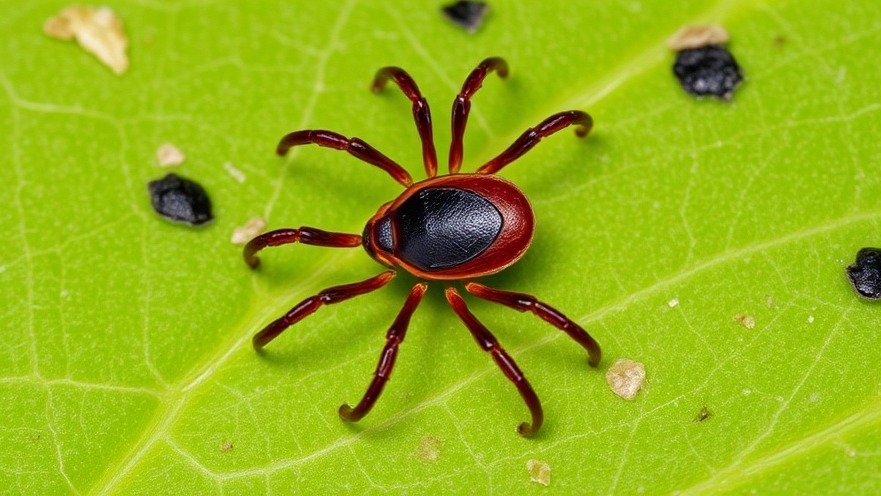
Understanding Lyme Disease: A Growing Concern
As the weather warms up, outdoor activities become more irresistible, but so does the risk of Lyme disease. With around 476,000 cases reported annually in the U.S., this tick-borne illness has garnered attention for both its prevalence and the controversies surrounding its diagnosis and treatment. What begins as a simple tick bite can escalate into a chronic condition affecting multiple systems within the body if not treated promptly. For those living in tick-prone areas like the Northeast or Midwest, awareness and prevention are crucial.
Symptoms and Identification
Lyme disease typically manifests through a characteristic rash, often described as a "bull's-eye." However, symptoms can vary significantly among individuals. Fever, muscle aches, and headaches may accompany the rash. In its more advanced stage, Lyme can lead to neurological symptoms like facial palsy or shooting pains. For many, these symptoms can become debilitating, affecting daily life and overall health.
Importance of Early Detection
Understanding the symptoms of Lyme disease can make a significant difference in treatment outcomes. Immediate medical attention following a tick bite is paramount. Doctors like Laurie Radovsky emphasize the necessity of antibiotics as a preventative measure, which can be the difference between a quick recovery and long-lasting effects. The significance of early diagnosis cannot be overstated—those who act swiftly can often avoid chronic symptoms later on.
How to Check for Ticks: A Simple Guide
It’s essential to implement effective tick-checking routines after spending time outdoors. Start by wearing light-colored clothing to make spotting ticks easier. Showering or changing clothes can help dislodge any ticks that may have attached themselves. Use a mirror to check areas that are difficult to see, like behind ears or in the scalp. If you find a tick, remove it carefully with tweezers, ensuring to clean the area afterward and schedule a doctor’s visit.
Geographic Hotspots: Where is Lyme Disease Most Prevalent?
Approximately 95% of Lyme disease cases arise from just 14 states, including Connecticut, New York, and Wisconsin. Understanding the geographic distribution of this illness can help individuals in these regions take proper precautions. While ticks can exist in various environments, those living near tall grass and woods consistently need to stay vigilant.
Cultivating Community Awareness
Community health and wellness programs play an essential role in educating residents about Lyme disease. Awareness initiatives can empower community members by providing them with tools and information for prevention and early detection. Local health departments and wellness centers can offer resources on Lyme disease, encouraging people to take proactive measures.
Exploring Alternative Treatments
Amid the ongoing healthcare debates, many individuals are turning to alternative medicine for relief from Lyme disease symptoms. Approaches like naturopathy emphasize holistic healing through natural remedies, nutrition, and lifestyle medicine. For those seeking natural solutions, it is beneficial to consult with a healthcare professional who specializes in these areas.
Personal Stories: The Human Impact of Lyme Disease
Understanding Lyme disease is not just about statistics; it is also about personal stories of suffering and recovery. Many patients share their struggles with fatigue and cognitive impairments, highlighting the profound impact on their daily lives. These narratives foster a deeper understanding of the disease beyond the clinical definitions and data.
Take Action: How You Can Protect Yourself
Awareness is the first step towards prevention. Communities can unite to spread knowledge about Lyme disease through workshops, walks, and local events that promote health and wellness. The more informed we are, the better equipped we become to tackle this public health issue.
In conclusion, Lyme disease is a serious condition that requires both individual and collective action. By fostering community awareness, emphasizing early detection, and exploring various treatment options, we can reduce the incidence and impact of this stealthy disease.
 Add Element
Add Element  Add Row
Add Row 




Write A Comment